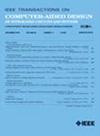Efficient Model Switching in RRAM-Based DNN Accelerators
IF 2.9
3区 计算机科学
Q2 COMPUTER SCIENCE, HARDWARE & ARCHITECTURE
IEEE Transactions on Computer-Aided Design of Integrated Circuits and Systems
Pub Date : 2025-03-11
DOI:10.1109/TCAD.2025.3550403
引用次数: 0
Abstract
Resistive random access memory (RRAM) has emerged as a promising technology for deep neural network (DNN) accelerators, but programming every weight in a DNN onto RRAM cells for inference can be both time-consuming and energy-intensive, especially when switching between different DNN models. This article introduces a hardware-aware multimodel merging (HA3M) framework designed to minimize the need for reprogramming by maximizing weight reuse, while taking into account the hardware constraints of the accelerator. The framework includes three key approaches: 1) crossbar (XB)-aware model mapping (XAMM); 2) block-based layer matching (BLM); and 3) multimodel retraining (MMR). XAMM reduces the XB usage of the preprogrammed model on RRAM XBs while preserving the model’s structure. BLM reuses preprogrammed weights in a block-based manner, ensuring the inference process remains unchanged. MMR then equalizes the block-based matched weights across multiple models. Experimental results show that the proposed framework significantly reduces programming cycles in multi-DNN switching scenarios while maintaining or even enhancing accuracy, and eliminating the need for reprogramming.基于随机存储器的DNN加速器的高效模型切换
电阻式随机存取存储器(RRAM)已经成为深度神经网络(DNN)加速器的一种很有前途的技术,但是将DNN中的每个权重编程到RRAM细胞上进行推理既耗时又耗能,特别是在不同DNN模型之间切换时。本文介绍了一个硬件感知的多模型合并(HA3M)框架,该框架旨在通过最大化权重重用来最小化重编程需求,同时考虑加速器的硬件约束。该框架包括三个关键方法:1)交叉棒(XB)感知模型映射(XAMM);2)基于块的层匹配(BLM);3)多模型再训练(MMR)。XAMM减少了在RRAM XB上预编程模型的XB使用,同时保留了模型的结构。BLM以基于块的方式重用预编程的权重,确保推理过程保持不变。然后,MMR在多个模型之间均衡基于块的匹配权重。实验结果表明,该框架在保持甚至提高精度的同时,显著缩短了多深度神经网络切换场景下的编程周期,并消除了重编程的需要。
本文章由计算机程序翻译,如有差异,请以英文原文为准。
求助全文
约1分钟内获得全文
求助全文
来源期刊
CiteScore
5.60
自引率
13.80%
发文量
500
审稿时长
7 months
期刊介绍:
The purpose of this Transactions is to publish papers of interest to individuals in the area of computer-aided design of integrated circuits and systems composed of analog, digital, mixed-signal, optical, or microwave components. The aids include methods, models, algorithms, and man-machine interfaces for system-level, physical and logical design including: planning, synthesis, partitioning, modeling, simulation, layout, verification, testing, hardware-software co-design and documentation of integrated circuit and system designs of all complexities. Design tools and techniques for evaluating and designing integrated circuits and systems for metrics such as performance, power, reliability, testability, and security are a focus.

 求助内容:
求助内容: 应助结果提醒方式:
应助结果提醒方式:


